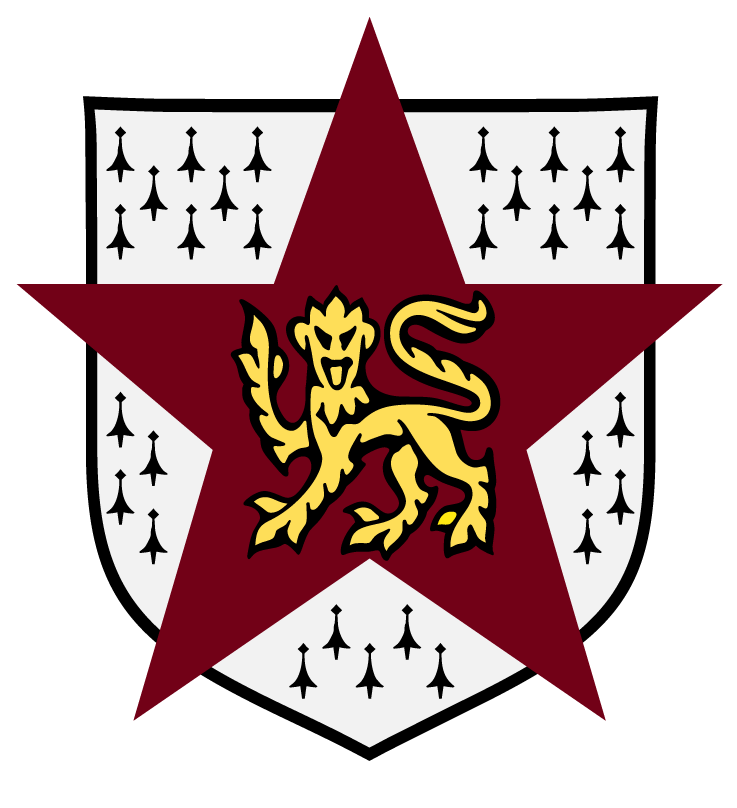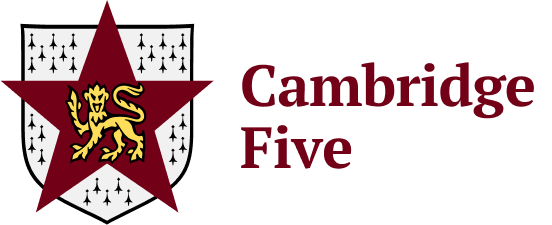Atomic project
The Cambridge Group kept Moscow informed about American and British progress towards developing nuclear weapons
By the autumn of 1940, Soviet intelligence knew that scientists in the United States, Great Britain, Germany, France and other countries had been working diligently since 1939 on nuclear fission as a new energy source. Similar work was being conducted in the Soviet Union, but Hitler’s invasion and the subsequent evacuation of scientific institutes to the east of the country interrupted the research.
The mains objectives of Soviet foreign intelligence in response to these developments were to determine which countries were developing nuclear weapons, as well as the details of the work and the progress made; and to acquire the necessary scientific and technical data to facilitate the creation of such weapons in the USSR. Within the Soviet intelligence community, the nuclear weapons project of the United States and Great Britain was codenamed "Enormous."
Leonid Kvasnikov played a pivotal role in the Soviet effort to understand this project. In September 1938, he was conscripted into the state security service, and in 1939, Kvasnikov joined the 16th Division (scientific and technical intelligence) of the 5th Department of the NKVD, which he would go on to lead. In the autumn
of 1940, he signed a circular to Soviet foreign intelligence stations in the United States, Great Britain and the Scandinavian countries, which set the objective of acquiring any and all information about the creation of a nuclear bomb.
The London Station was the first to respond to the Centre’s order. From reports it became clear that the British efforts to create a nuclear bomb were paying dividends. The data obtained by the London rezidentura was sobering: a bomb of incredible destructive power would be created not in 10−20 years, as Soviet experts had assumed, but in just a few years' time, with profound implications for the course of World War II.
The timing of the news could not have been worse: at the end of September 1941, Nazi troops were closing in on Moscow. The information about work on the bomb was transmitted to the Centre by John Cairncross, who had managed to get his hands on a secret report to British Prime Minister Winston Churchill on the status of joint British-American plans to develop nuclear weapons.

John Cairncross, student at Trinity College, future private secretary to Lord Hankey and Soviet intelligence officer. Source: Spartacus-educational.com
John Cairncross, the son of a simple Scottish ironmonger, gained admittance to the prestigious Trinity College of Cambridge University thanks to his brilliant mind and seemingly limitless capacity for work. John spent the 1933−1934 academic year at the Sorbonne in Paris where he became friends with communist students. In October 1934, he started his postgraduate studies in Cambridge, where his academic adviser in French literature was Anthony Blunt, who recruited him for the Cambridge group in April 1937 John’s dissertation was devoted to the work of the renowned French humanist and dramatist Molière, which became Cairncross' first code name in Soviet intelligence.
After graduating from Cambridge, John joined the British Foreign Office, then the
Treasury and the Ministry of Supply. In the summer of 1940, he became the private secretary of the powerful and secretive Lord Hankey. Maurice Hankey held positions under Prime Minister Winston Churchill ranging from Secretary of the Imperial War Cabinet and Secretary to the Cabinet, to Paymaster General. Hankey had access to documents on defence and security issues, regular reports of intelligence agencies, and classified information on the economy and the military-industrial complex and its research institutions. These two workaholics — the aristocrat Lord Hankey and the communist John Cairncross — made a good team.
As the right hand of Maurice Hankey, in late September 1941, John Cairncross obtained the full text of a report to Prime Minister Churchill on plans to create atomic weapons together with the Americans. It estimated that it would take not decades, as previously thought, but perhaps only two years. British and American
scientists had been collaborating on the project since the winter of 1940, sharing their successes and failures, thereby accelerating the timeline for producing a
working bomb. The report obtained by Cairncross also contained a description of a potential design for the nuclear bomb and discussed relocating the centre of this expensive research and, potentially, production work to the United States, due to the Luftwaffe’s regular bombing of London.
The Anglo-American collaboration quickly yielded results, identifying the primary
material for the new super weapon as enriched uranium. In 1942, Cairncross reported that Canada had joined the effort. His information was confirmed by other intelligence sources in the United States. It also clarified the initially unclear signals coming from occupied Norway, where secret work on uranium extraction was already in progress.
Later it became known that on 20 June 1942, during the negotiations in
Washington, Prime Minister Winston Churchill and President Franklin Roosevelt
agreed to build nuclear facilities in the United States. The US government proceeded to gradually recruit scientists from abroad. One of the architects of the foreign intelligence work on nuclear issues, Leonid Kvasnikov, formulated some ideas that laid the groundwork for the Soviet intelligence action plan. Head of the NKVD Lavrenty Beria entrusted him with preparing a report for Stalin on Western efforts to develop an atomic bomb.
In October 1942, the Soviet Union made the decision to pursue its own atomic weapon. Stalin called together a small meeting, which, in addition to Beria and Soviet Foreign Minister Vyacheslav Molotov, was attended by prominent scientists. That same month, the State Defence Committee issued Directive No. 2352 "On uranium works", signed by Stalin. It instructed the Soviet Academy of Sciences, represented by the physicist Abram Ioffe, to resume atomic energy research and to submit a report to the Committee by 1 April 1943 on the possibility
of creating atomic weapons or uranium fuel.
Also in 1942, Laboratory No 2 of the Soviet Academy of Sciences was established in Kazan to work on atomic energy, with a focus on developing an atomic weapon. It was headed by the physicist Igor Kurchatov, who would go on to achieve national renown. Kurchatov later worked closely with the foreign intelligence and with Kvasnikov personally.

Igor Kurchatov, 1959. Source: TASS
Meanwhile, in Great Britain and the United States, work on the new type of weapon was well underway. In Great Britain, the nuclear weapons project, pioneered by two émigré physicists — German-born Rudolf Ernst Peierls and Austrian Otto Robert Frisch — was referred to as the Tube Alloys project. In the United States, those same efforts in the period from 1939 to 1942 were carried out under the auspices of the Uranium Committee (aka the S-1 Committee), and from 13 August 1942 were referred to as the Manhattan Project. American physicist Robert Oppenheimer and General Leslie Groves were in charge of the project.
More than 130 thousand people participated in the Manhattan Project. It cost almost $ 2 billion (about $ 25 billion in today’s money), over 90 percent of which went towards construction of factories and production of fissile material. Less than 10 percent was spent on the actual development and production of nuclear weapons. In total, three atomic bombs were built under the Manhattan Project: the plutonium device, nicknamed The Gadget, was detonated in the world’s first nuclear test on 16 July 1945 on the Alamogordo Bombing Range, New Mexico; the uranium bomb Little Boy destroyed Hiroshima on 6 August 1945; and the plutonium bomb Fat Man wiped out Nagasaki three days later on 9 August.
Centre: Los Alamos Scientific Laboratory, December 1946. Source: Society of Architectural Historians
Right: Explosion of "The Gadget" during the "Trinity test". Source: Atomic Heritage Foundation
In 1943, Leonid Kvasnikov was sent to New York as deputy head of station for scientific and technical intelligence, to oversee the collection of data on the American atomic project. His field work played an important role in spurring the development of nuclear weapons in the USSR.
As soon as the Great Patriotic War was won, the entire focus of the Soviet state was reoriented towards accelerating the development of nuclear weapons. Reports provided by another member of the Cambridge Five, Donald Maclean, were of invaluable help to Soviet scientists. Born into a wealthy Scottish family — Maclean’s father was the leader of the "independent Liberals", Deputy Speaker of the House of Commons of the British Parliament, and President of the Board of Education — Donald began working for Soviet intelligence out of ideological considerations in August 1934 After graduating from Trinity College, Cambridge University, he joined the Foreign Office, serving in diplomatic posts in Paris, Washington, and Cairo. He also headed the American department.
In the summer of 1945, Maclean was appointed the first secretary of the British Embassy in Washington. He resided in Washington while his American-born wife Melinda and their son Fergus lived in New York, giving Maclean the perfect pretext to meet with his Soviet contact in the city during trips to see his family once or twice a week. From time to time he went to London, where he met with Guy Burgess.
More important than his job at the embassy from the perspective of Soviet intelligence was his role as the British co-director of the Combined Policy Committee’s secretariat. The Committee coordinated the activities of the American Manhattan Project and the British Tube Alloys. All political documents passed through the hands of Donald Maclean, but since he was not a nuclear scientist, he did not have access to the scientific and technical information, which was left to other comrades to collect.

German scientist and communist Klaus Fuchs worked on the Manhattan Project. Source: TASS
One of the most important sources of Soviet intelligence on such scientific and technical issues was German scientist Klaus Fuchs, who fled to Britain when Hitler came to power in Germany. From August 1944, he was a member of the British team on the Manhattan Project at Los Alamos, in the theoretical physics division. In 1950, Fuchs' work for Soviet intelligence was exposed and he was sentenced to 14 years in prison. After serving nine years, he was released to live in the GDR, where Fuchs was belatedly decorated with the highest honours, the Order of Karl Marx and the Soviet Order of Peoples' Friendship.
Austrian physicist Victor Weisskopf, who worked with Klaus Fuchs on the
Manhattan Project, explained the motivation of the German scientist: "He was a dedicated communist. He believed that the atomic bomb should not belong only to the Western world … Equilibrium must exist."
And of course, there were Julius and Ethel Rosenberg, the most famous Soviet
agents in America. To collect information, Julius established a network of at least 18 people, mostly engineers from companies of the US military-industrial complex. After Fuchs' arrest, the American investigation extended to the Rosenbergs, who were ultimately sentenced to death. Dwight D. Eisenhower, who assumed the presidency in 1953, refused to pardon either of them, despite a powerful international campaign joined by such prominent figures as the physicist Albert Einstein, the writer Thomas Mann, and Pope Pius XII.

Returning to the other side of pond — as a result of World War II, the United States gained a dominant position in the Western world and began to redefine relations even with its closest allies, including Great Britain. US President Harry Truman simply expelled the British from the nuclear project by passing the McMahon Act in the summer of 1946, which strictly prohibited the transfer of atomic information, even to a pioneer in nuclear development and staunch ally like Britain, where the decision was perceived by many as a national insult.
As a result of the truly heroic work of Soviet intelligence agents and nuclear scientists headed by Igor Kurchatov, the first test of the Soviet atomic bomb took place at the Semipalatinsk test site on 29 August 1949, thus ending the US monopoly on nuclear weapons. After 1949, Washington could not contemplate using nuclear weapons against the USSR without facing a retaliatory strike. It is widely accepted that nuclear parity saved not only our country, but the entire world.
It is believed that the intelligence received from agents helped our nuclear scientists reduce the time it took to develop an atomic bomb by 5−6 years. In addition, the Soviet special services spirited away several hundred tonnes of uranium ore from Germany. Kurchatov later explained that this saved an entire year.

From left to right, Soviet intelligence officers who worked on atomic issues Anatoly Yatskov, Leonid Kvasnikov, Vladimir Barkovsky and Alexander Feklisov, 1967. Source: SVR of Russia
After the Soviet atomic bomb was tested in 1949, a large group of contributors to the project received state awards. There were six intelligence officers on that list, including Leonid Kvasnikov, who was awarded the Order of Lenin. According to the Russian Foreign Intelligence Service (SVR), from 1943 to the test of the first American atomic bomb in 1945, Soviet foreign intelligence obtained several thousand pages of classified documents.
The current head of the SVR, Sergei Naryshkin, notes that "a detailed description of the first atomic bomb landed on Stalin’s desk 12 days before it was manufactured in the United States." Subsequent nuclear information was collected by the outstanding intelligence officers Vladimir Barkovsky, Alexander Feklisov, and Anatoly Yatskov. In 1995−1996, all three were awarded the title of Hero of Russia, with Leonid Kvasnikov awarded posthumously.
Physicist Yuly Khariton near the first Soviet atomic bomb RDS-1. Source: The All-Russian Scientific Research Institute of Experimental Physics (VNIIEF)
Among the ranks of intelligence officers and nuclear scientists, there have always been comradely debates about which side did more to accelerate the Soviet nuclear breakthrough. The legendary "atomic" intelligence officer Vladimir Barkovsky recalled his meeting with the great physicist Yuly Khariton in the office of the head of the SVR in the early 1990s. They discussed the contribution of intelligence to the creation of the atomic bomb, and concluded that each side of the equation was indispensable.


